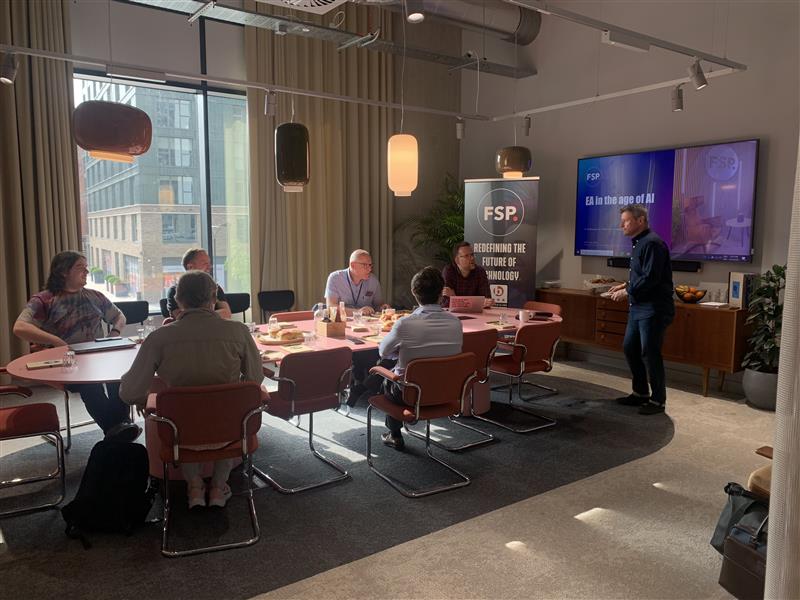At our round table event on Thursday 12th June 2025, hosted by Craig Paterson and Richard Edwin, we explored how AI is reshaping the way we live and work with thought leaders from some of our current and prospective clients.
We discussed how AI could transform our lives and work:
To Enhance Creativity: AI can be a catalyst for creativity, enabling individuals to explore new ideas and approaches.
To Improve Well-Being: By aligning AI with sustainability and ethics, we ensure it contributes positively to our overall well-being.
To Increase Impact: AI can be leveraged to create greater impact in our personal and professional lives.
Ease of Use: It is essential to make AI tools easy to use, supporting and empowering people to perform their best work.
Variety and Diversity: AI should bring variety into our lives, encouraging diverse perspectives, calling out bad behaviours, and stopping us from living in an echo chamber.
3 key themes stood out:
- Privacy: Returning the power to share data back to the individual, ensuring personal data ownership and control.
- Security: Establishing trust around data sharing, ensuring data safety and controlling how you share your data with approved parties.
- Innovation: Reframing IT’s role from being perceived as a blocker to innovation to becoming an enabler of it.
As an enterprise architect community, we need to be central to these conversations, offering up solutions and paths forward.
Reflection
The discussion concluded with reflections on the role of the enterprise architect community in guiding organisations through the journey of AI adoption:
Leveraging Skills: As enterprise architects, we possess the ability to think big, manage diverse (and sometimes conflicting) demands, navigate ambiguity, and create ways forward.
Driving Value and Outcomes: We need to remain focused on what the enterprise architect community is here to accomplish: driving value and delivering impactful results through periods of uncertainty.
Tips to succeed
Get into the pivotal meetings where strategic decisions are made: By actively guiding conversations, we can ensure that enterprise architects becomes enablers of innovation, not a perceived blocker, empowering organisations to embrace change with confidence.
Proactivity lead: Rather than waiting for opportunities to be handed to us, or reacting passively, we should proactively bring forward opportunities to the business. Our role transcends titles or labels; whether or not the organisation recognises us as enterprise architects, the fundamental understanding must be that we are here help.
Lead from the front: We need to be adopting new AI ways of working so that we have the experience of using the tools first. By doing so, we build credibility, rapport and empathy with stakeholders.
In Conclusion
AI is set to drive massive change in the way that we work. It will change our roles and responsibilities, our processes, and our structures. As such, business architecture is the biggest domain impacted by AI. Data fuels AI, so the data architecture domain is the next biggest impacted domain. There will be changes across the way applications are built and used, the infrastructure that powers AI (specifically the cloud), and the need for wraparound security. With AI touching all these domains, the enterprise architecture community is key to success.
AI is the current big wave changing the way we work, there have been waves before and there will be waves that come later, therefore not only do we need to help our organisations embrace the opportunity for AI, but we also need to set them up for the ongoing, and increasing, pace of change that’s coming.
We’re really looking forward to continuing conversations on this very topic. We encourage you to reach out to us if you are looking for support, Contact – FSP

